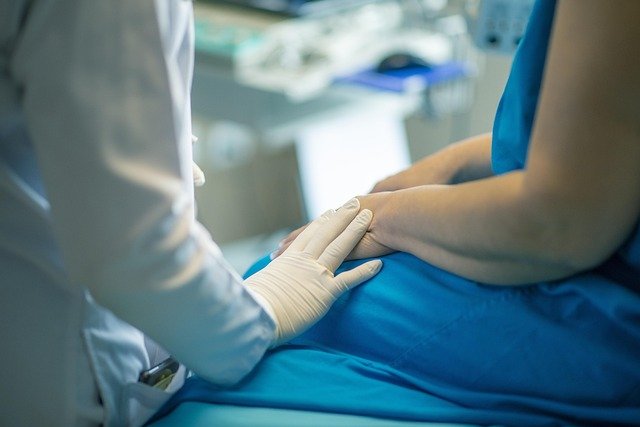Liposuction Uncovered: Surgical Fat Removal Guide
Discover how liposuction sculpts stubborn pockets of fat by permanently removing fat cells from targeted areas. This comprehensive guide covers expected outcomes, recovery timelines, costs, and comparisons with non-surgical options like CoolSculpting. Ideal for adults near their goal weight seeking precise body contouring and realistic, lasting results.

Liposuction is a widely performed cosmetic operation aimed at removing localized fat deposits to improve body shape. While it permanently eliminates fat cells in the treated zones, it is not a method for overall weight loss. Optimal results come when the procedure is combined with a healthy lifestyle, stable weight, and reasonable expectations about what surgery can achieve.
Clinical evidence and patient outcomes
Robust clinical studies and surgical series show that liposuction is both effective and safe when performed by qualified, credentialed surgeons. Research demonstrates persistent contour improvements for many patients, particularly when large weight fluctuations are avoided after the procedure. Patient satisfaction tends to be high: individuals commonly report a slimmer silhouette, better clothing fit, and increased self-confidence once recovery is complete. Outcomes vary based on proper candidate selection, the surgical technique used, and adherence to post-operative care.
Complication rates are low in experienced hands, but no surgery is without risk. Careful preoperative evaluation and choosing a board-certified plastic surgeon and accredited facility are important steps that influence both safety and cosmetic outcome.
How liposuction addresses stubborn belly fat
The abdomen is among the most frequently treated areas because subcutaneous belly fat can resist diet and exercise. Liposuction targets this subcutaneous layer beneath the skin, removing fat from both superficial and deeper planes to create a smoother abdominal contour. Important considerations:
- Liposuction does not remove visceral fat around internal organs, so it does not change metabolic risk factors associated with visceral fat.
- Best candidates are adults near their ideal weight who have good skin elasticity; significant loose or excess skin may require a tummy tuck or other skin-tightening procedure to achieve optimal shape.
- Initial improvement is visible right after surgery, but the final contour becomes clearer over weeks to months as post-operative swelling diminishes.
Setting realistic goals and developing a surgical plan tailored to a patient’s anatomy leads to the most attractive and lasting results.
Surgical versus non-surgical fat-reduction options
Many patients compare liposuction with non-invasive technologies to decide what fits their goals, timeline, and tolerance for downtime. The differences are notable in how much fat can be removed, speed of results, and recovery.
| Method | Recovery Time | Results Timeline | Fat Reduction % |
|---|---|---|---|
| Liposuction | 1-2 weeks | Immediate* | 20-80% |
| CoolSculpting | None | 2-3 months | 20-25% |
| Ultrasound Therapy | None | 8-12 weeks | 15-20% |
| Radio Frequency | None | 6-8 weeks | 10-15% |
Prices, rates, or cost estimates mentioned in this article are based on the latest available information but may change over time. Independent research is advised before making financial decisions.
*Final results become clearer after post-operative swelling has gone down.
Costs, recovery, and expected timeline
The cost of liposuction depends on how many areas are treated, the extent of fat removal, the geographic location, and the surgeon’s experience and facility fees. Typical price ranges often fall between $3,000 and $8,000 per treated area, though individual cases can vary. Always request a detailed quote that lists what is included: surgeon fee, anesthesia, facility charges, and follow-up visits.
Recovery usually involves reduced activity for one to two weeks. Many patients return to desk-based work within about a week, with swelling and bruising gradually resolving over several weeks. Final shaping and subtle improvements may continue to appear for up to three to six months as tissues settle. Strenuous exercise is usually deferred for around 3–4 weeks or until the surgeon gives clearance.
Because liposuction removes fat cells in targeted zones, results can be long-lasting, but remaining fat cells can expand with weight gain. After surgery, any future weight gain may redistribute to untreated parts of the body.
Choosing the right provider and safety considerations
Selecting a board-certified plastic surgeon and an accredited operating facility is essential. A thorough consultation should include medical history review, physical examination, and discussion of goals. The surgeon should explain the recommended technique, expected recovery, limitations, and possible complications, which can include bleeding, infection, contour irregularities, numbness or altered sensation, and anesthesia-related risks.
Key signs of a trustworthy provider include clear before-and-after photos of comparable cases, transparent pricing, willingness to explain the risks and benefits, and an accredited surgical setting. Patient reviews and professional referrals can also inform your decision.
Questions to ask at your consultation
- Are you board-certified in plastic surgery?
- Can I review before-and-after photos of similar procedures?
- Which technique do you recommend for my anatomy, and why?
- What is the total cost, and what does it include (anesthesia, facility fees, follow-up)?
- What is the expected recovery timeline and activity restrictions?
Open, honest communication during consultation helps set realistic expectations and reduces the chance of dissatisfaction.
Making an informed decision
Liposuction is a proven choice for targeted fat removal and reshaping areas such as the abdomen, thighs, hips, flanks, and arms. Compared with current non-invasive options, it generally offers more immediate and substantial reductions but requires downtime and carries surgical risks. For many patients, combining liposuction with sustained lifestyle habits—healthy diet, regular exercise, and stable weight—produces the most satisfying and durable results.
This article is for informational purposes only and should not be considered medical advice. Please consult a qualified healthcare professional for personalized guidance and treatment.





